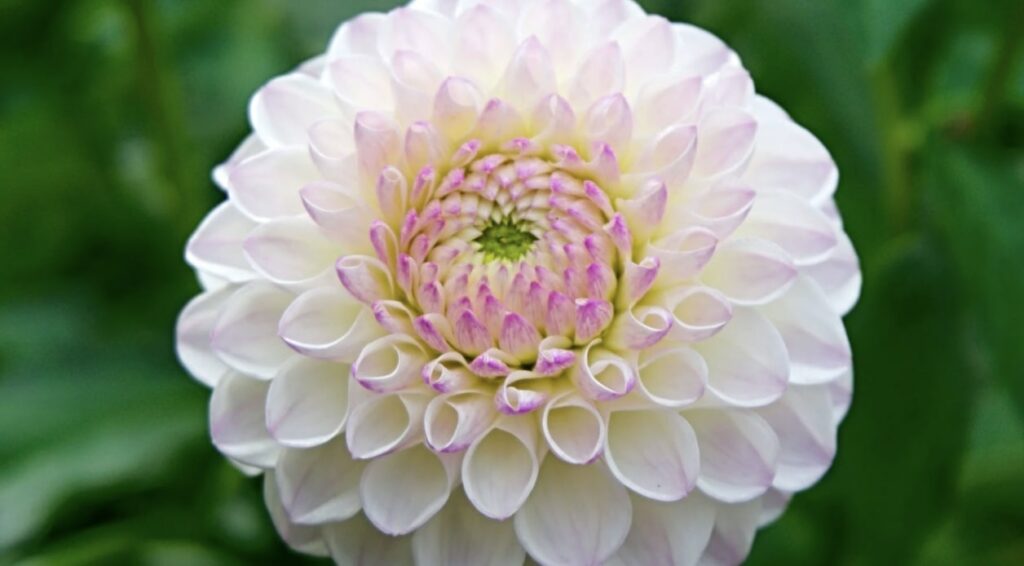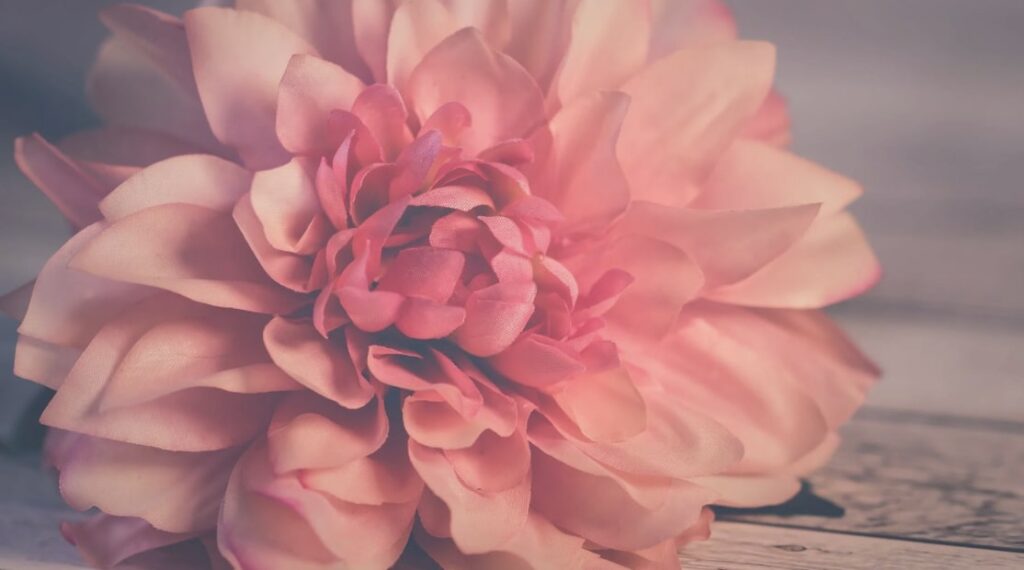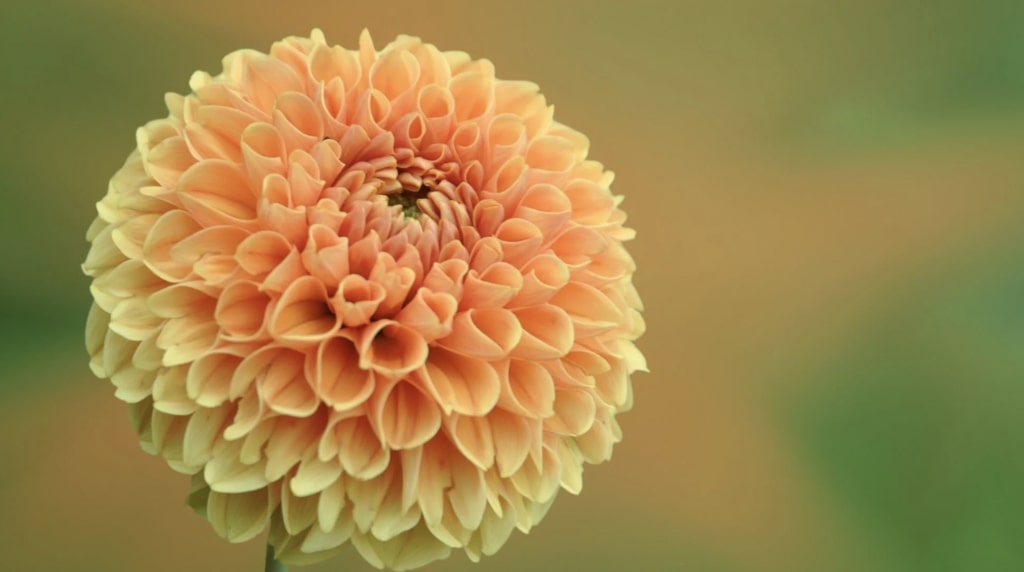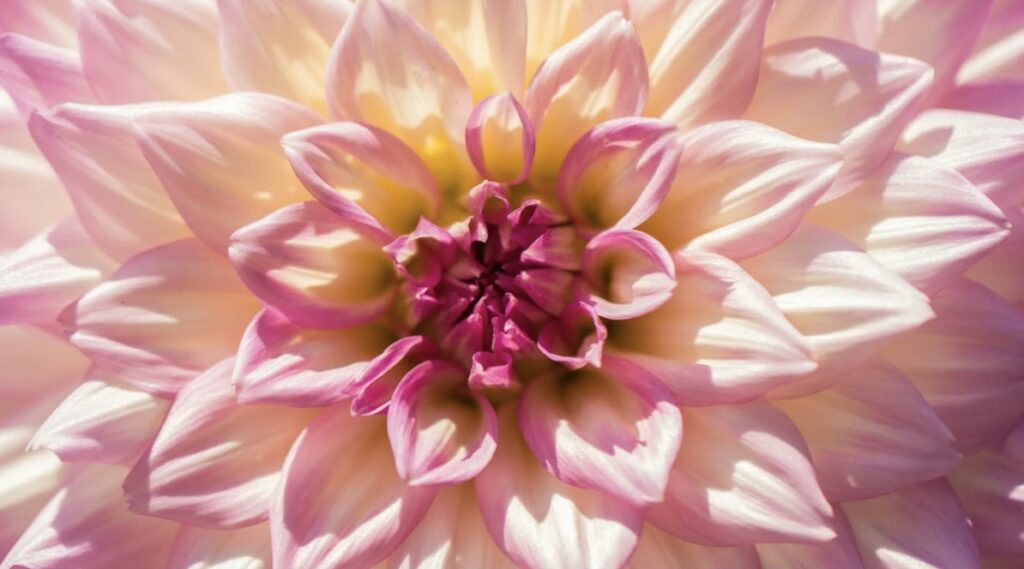The majestic dahlias blossom during the summer and fall seasons, from mid-July to November. Usually, they can do so as fast as eight weeks after you have planted them in the ground.
You can increase the odds of beautiful and large flowering by feeding the flower with quality plant food. This must be liquid fertilizer with a lower nitrogen count, such as a 5-10-10 balance.
Learn more about the dahlia flower, its different blooming times, how to best take care of it, and more.
About the Dahlia Flower


Genus: Dahlia
No. of species: 42
Family: Asteraceae
Root Type: tuberous
Native Habitat: Central America and Mexico
Sun Needs: Sheltered or indirect sun
Humidity Level: Moderate
Dahlia is a genus of perennial flowering herbs with roughly 40 varieties of the family Asteraceae. All of these plants are bushy and have tuberous roots that are round and fleshy.
Asters, sunflowers, and dandelions belong to the same family as dahlias.
Now, the dahlia plant is native to the high mountains and valleys in Mexico and Central America. They love sheltered spots and moderate warmth and humidity.
At home, they can be grown in pots and planters, and garden beds and borders. Large ones are great to be planted in the back row along with other big perennials.
Physical Description of the Dahlia


To most people, the dahlia is an incredibly beautiful flower. It features a captivating bloom structure consisting of five or six layers.
Depending on the species, dahlias can range from 10 inches to 4 feet tall. Their blooms can be 2 inches to 1 foot in diameter.
Their fabulous leaves come in bright or deep-green hues and are lobed with pointed or round ends.
Plus, like their famous cousin, the daisies, they also have an extensive range of color styles, from cream white to royal purple and everything in between.
What can affect the flowering seasons of dahlias?


Dahlias flower at different times, from summer to the first frost. But the following are the main things that can affect it:
Dahlias’ Environment
Planting or placing dahlias in a cold and drafty environment will hinder their growth and development.
They can withstand USDA hardiness zones 8 to 11. Any lower or colder than these zones will shock and harm them, although they can barely tolerate zones 6 to 7.
Of course, their native habitat and where you live can be two completely different locations. But still, they can flourish and grow lavishly given that you fulfill their requirements.
In their home in Mexico, Guatemala, and other parts of Central America, they grow comfortably on warmer days and cooler nights.
Anyway, they prefer an environment of 68℉ to 72℉ (20℃ to 22℃). Growing them at a temperature outside of the said range will negatively impact them.
Also, they have to get ample sun exposure every day. They should be under bright indirect light so they can absorb it and convert it into energy and food in order to survive.
Dahlias’ Proper Care
In relation to the above section, you have to give your dahlia the proper care day in and day out.
Here are the vital care aspects that you have to look after:
- Soil – They prefer loose, fertile, and well-draining soil. Use a high-quality potting medium with sand or perlite for great drainage.
What’s more, it should be a bit acidic with a pH of 6.5, allowing the dahlia to get all the nutrients it needs.
- Watering – Water it deeply once or twice every week. If you have a large sweep of dahlias in the garden, you could invest in drip irrigation for your home, which will direct the water at the roots while preventing the leaves from getting wet.
- Fertilizer – As said earlier, you can give your dahlias a low-nitrogen and balanced liquid fertilizer. This way, the flowers can bloom profusely and wonderfully.
This should be done about three to four weeks for in-ground dahlias and every two weeks for potted ones.
- Pruning – While not always required, pruning your dahlias will encourage more flower and foliage growth.
Simply pinch off the apical bud, which forms on top of the plant above its four sets of leaves, when it gets to be about 16 inches tall.
What are the blooming times of certain dahlias?


The type of dahlia you’re growing determines when its flowers will bloom.
The dahlia’s blooming times aren’t all the same. While all of them bear flowers in spring and autumn, their flowering times differ throughout these seasons.
To show you what we mean, we’re going to mention certain dahlia varieties that grow in the early, mid, and late parts of the season.
1) Early-Season Bloomers
As the name suggests, early-season dahlias are those that grow earlier than other kinds of these flowers.
Here are just a few examples of dahlias that bloom early:
- Brown Sugar Dahlia
Brown Sugar Dahlia is a unique flower thanks to its smoky-red color and attractive ball flower shape.
The exciting flower grows 4 to 5 inches across and is an excellent addition to any garden and yard. As perennials, they can come back year after year to beautify your house.
- Cornel Bronze Dahlia
A lighter version of the Brown Sugar Dahlia, this one comes in a fun shade of pink, peach, or orange.
Its highlight is its extra large flowers and longevity. Another beautiful thing about it is it can withstand a temporary period of drought, so if you forget to water it for a while, it can still bounce back.
- Golden Scepter Dahlia
Looking for a dahlia with a cheery look that matches that of the daisy? Then you can get the Golden Scepter Dahlia.
If there’s one word to describe it: this flower is ethereal having a round sun-like appearance in the color of perfect gold!
2) Mid-Season Bloomers
A little later than early-season ones are mid-season dahlias. They also have incredible beauty, large flowerheads, and a lovely variety of shades.
Here are some examples of mid-season dahlias you can obtain from your florist or nursery:
- Lark’s Ebbe Dahlia
Lark’s Ebbe Dahlia’s flower show runs from early to mid-season. As beautiful as its name, it showcases apricot, peach, light orange, and buttery yellow flowers that can be 4 to 6 inches across.
The appearance of this flower is pretty compact with straight long stems. They’re indeed great as flower bunches, bouquets, and garden plants.
- Labyrinth Dahlias
Larger than the ones we have mentioned before this, the Labyrinth Dinnerplate Dahlia is well-known for its long, wavy, and spiky petals that grow an impressive 8 to 10 inches blooms.
The flower’s lovely appearance belongs in watercolor art, as it has charming shades of apricot, raspberry, and pink. Putting it in a vase with other dahlias makes the entire arrangement look stunningly exotic!
- Café au Lait Dahlias
Café au Lait (translated to “coffee with milk”) Dahlias probably got its nickname from being the typical single vase flower we see at coffee shops.
This flower sports a mute, relaxed pink color. They have a large flowerhead with flat-tipped petals, which is why it’s one of the varieties referred to as Dinnerplate Dahlias.
3) Late-Season Dahlias
Although you would have to wait longer for these dahlias, they’re worth the wait. That’s also beneficial to you since these flowers can decorate your home later in the season.
So, let’s now see some spectacular varieties of late-season dahlias:
- Black Satin Dahlias
If you want to get a dahlia that aces first impressions, then you might want to acquire the Black Satin Dahlia.
It has extraordinarily large blooms that come in burgundy—close to black as a dahlia can ever be. Its small round petals make way for a bright magical yellow center.
And aside from that, it sits atop a healthy stem with lush, green foliage. It’s an elegant, classy, and unique late-blooming flower that’s hard not to like.
- Breakout Dahlias
A popular late-season dahlia, Breakout Dahlia can be described as having fleshy, bountiful cream blooms with subtle hints of pink and pale yellow.
They can grow up to 10 inches in diameter, so they can be easily noticed among your garden or ornamental plant roster
- Spartacus Dahlias
The Spartacus Dahlia is surely named after the courageous Thracian slave who led an army of gladiators to overthrow the Roman government.
These dahlias are enormous with blooms that are even larger than a human hand. And like its root name of Sparta, which also suggests Spartans, it sports a warlike crimson red color.
Also, this particular dahlia is classified under decorative dahlias, which typically have double flower structures, wavy, and flat-ended petals
As cut flowers and at-the-back perennials, you can bet that they’re an absolute knockout to have at your place!
FAQs about the Dahlia Flower


- Does the dahlia come back year after year?
Being a great perennial flower, the dahlia can come back every year if you give them the proper care.
To elaborate on this point, most dahlias become inactive during the winter. At that time, they have to be protected and stored well from the freezing weather, or they won’t survive.
To do this, you’d have to ensure the soil is well-draining and add a layer of mulch around the dahlia plant to help it retain moisture.
- What is the meaning of the dahlia flower?
The dahlia flower represents sophisticated beauty, compassion, and trust. One of its most terrific qualities is its resilience going from one season to another.
Hence, this also gives it the meaning of persistence and faith whether for oneself or a relationship.
- How long does the dahlia flower bloom?
The dahlia flower blooms from summer through autumn. That period goes from June to November, but it varies depending on the specific plant variety and the location.
Now, the average blooming time of a dahlia flower is four months. And there are early, mid, and late-season dahlias, but if they’re pruned correctly, they can last a few weeks longer.



